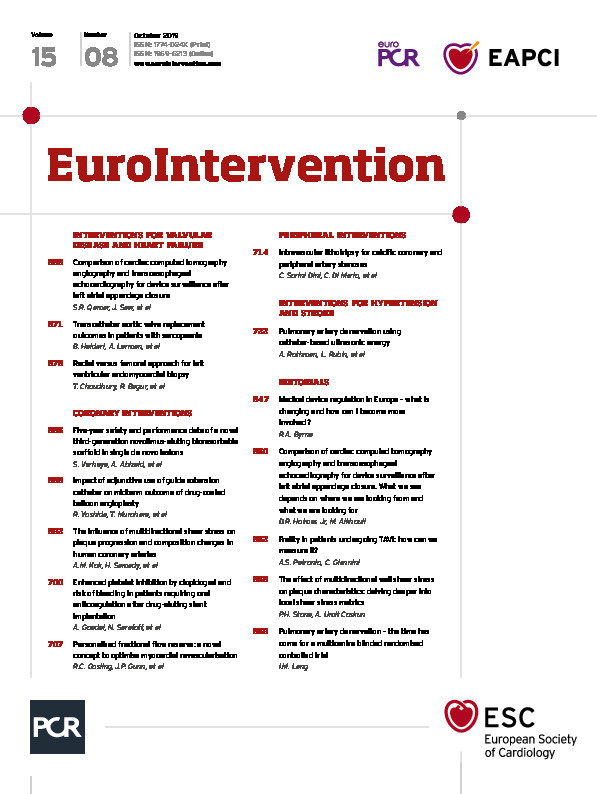
The article by Khalid et al highlights the important complications associated with the Impella® devices (Abiomed, Danvers, MA, USA) that are used to provide short-term mechanical circulatory support1.
The paper is succinct in highlighting all the systemic and device-related mechanical complications. The paper reports that the most common indication for Impella placement was in the setting of performance of a high-risk percutaneous coronary intervention (HRPCI). We want to highlight that the use of percutaneous left ventricular assist devices in HRPCI is based on very limited data. Results from the British Balloon Pump-Assisted Coronary Intervention Study (BCIS-1) showed that elective intra-aortic balloon pump (IABP) insertion did not reduce the incidence of major adverse cardiac and cardiovascular events following PCI2. The PROTECT II study was the largest randomised comparison of the Impella vs IABP in patients undergoing HRPCI3. The trial was terminated early after an interim futility determination by the Data and Safety Monitoring Board (DSMB) regarding the primary composite endpoint of major adverse events. The primary endpoint was similar between the two groups at 30 days. At 90 days, in the per-protocol analysis (comprising ten composite endpoints), there was a significant trend towards lower major adverse events in the Impella arm. Based on this, there has been an effort to standardise the use of mechanical circulatory support (MCS) in all patients meeting HRPCI criteria.
There are some caveats to using MCS in every HRPCI patient. First, there is a lack of a universally accepted definition of HRPCI. While there are clinical, anatomic and haemodynamic criteria used to describe HRPCI, a standardised definition still remains elusive. Commonly used clinical markers for defining HRPCI are unprotected left main artery, especially in the context of multivessel coronary atherosclerosis (MV-CAD), MV-CAD with high-risk features, poor left ventricular function (ejection fraction [EF] <35%), cardiogenic shock, ongoing infarction and last remaining vessel, etc. The Interventional Council of the American College of Cardiology (ICACC) has recently come up with a definition of HRPCI and a practical approach for the use of MCS in such patients undergoing percutaneous intervention4. The second caveat is that the majority of the patients meeting the criteria for HRPCI as endorsed by the ICACC can probably be managed without any support devices or vasopressor therapy or with some vasopressors sufficient to maintain systemic blood pressure periprocedurally – as has been done historically. Third, and most importantly, these devices are indeed associated with important complications, as highlighted in the current paper. MCS devices do have a role in select HRPCI patients but should not be advocated in every patient. Rather, an individualised approach with a frank discussion of the risks and benefits of the procedure with the patient should be adopted before implanting these devices.
In conclusion, we applaud the authors’ efforts in highlighting the role of future registries such as Manufacturer and User-friendly Device Experience (MAUDE) in exploring the device-related adverse events.
Conflict of interest statement
The authors have no conflicts of interest to declare.

